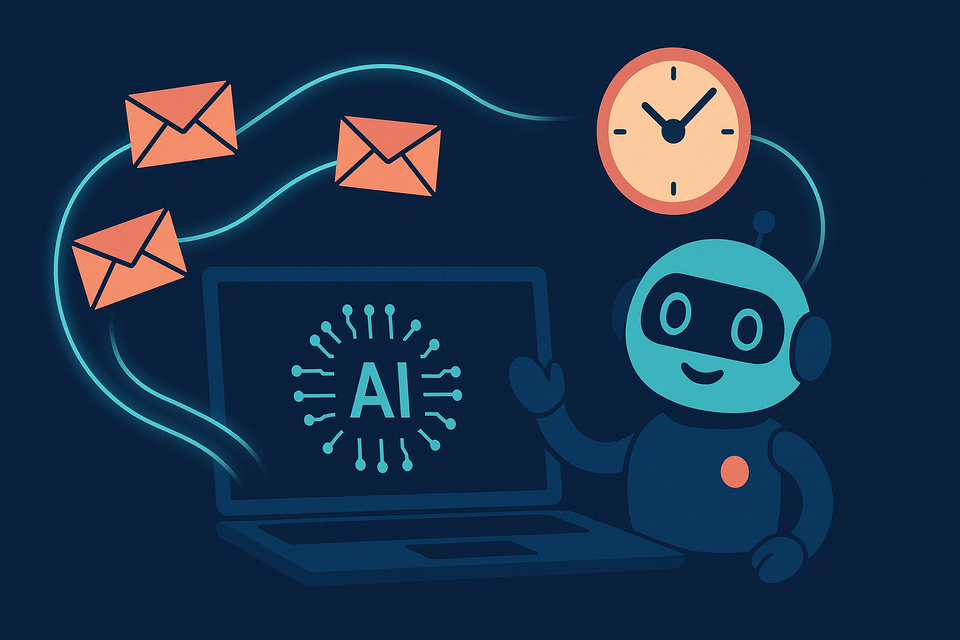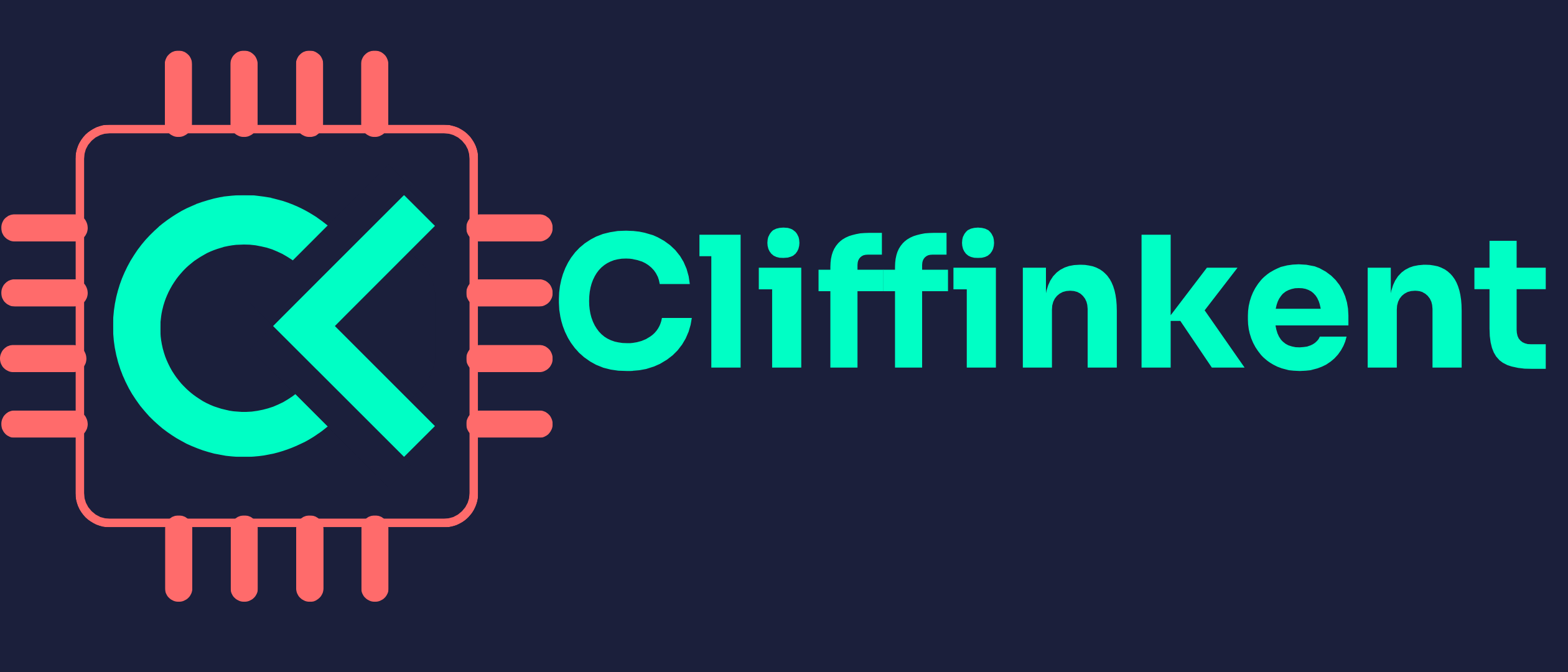How to Create Smart AI Email Templates That Save Hours Every Week

Stop writing the same emails over and over—let AI do the heavy lifting while you focus on what matters.
The Email Groundhog Day Problem
We've all been there. You sit down to write a follow-up email, and suddenly it feels like déjà vu. Didn't you write this exact same email last week? And the week before that?
If you're a small business owner, freelancer, or anyone who sends similar types of emails regularly, you're probably spending way more time on repetitive writing than you realize. The good news? AI can turn your email routine from a time sink into a productivity superpower.
What You'll Learn
By the end of this guide, you'll have a system that lets you:
- Generate personalized emails in under 30 seconds
- Maintain your authentic voice while saving time
- Never stare at a blank email screen again
- Create consistent, professional communication
Time investment: 30 minutes to set up Time saved: 2-5 hours per week (seriously)
Step 1: Identify Your Email Patterns
Before we dive into AI magic, spend 10 minutes reviewing your sent emails from the past month. Look for patterns—you'll probably find you send these types regularly:
Business Communications:
- Follow-up emails after meetings
- Project status updates
- Introduction emails
- Thank you messages
- Proposal submissions
- Invoice follow-ups
Personal Productivity:
- Scheduling requests
- Polite declines
- Networking outreach
- Reference requests
Make a quick list of your top 5-7 most common email types. These will become your template goldmine.
Step 2: Build Your Template Library
Now for the fun part—creating your smart templates. Think of these as email blueprints that AI can customize for any situation.
The Magic Formula
Each template should include:
- Clear context (what type of email this is)
- Tone instructions (professional, friendly, formal, etc.)
- Key variables in brackets like [CLIENT NAME]
- Length guidelines (to keep things concise)
- Specific details you want included
Template Examples
Follow-Up Email Template:
Write a friendly follow-up email to [CLIENT NAME] about [PROJECT/TOPIC].
Context: We discussed [MAIN POINTS] in our last meeting on [DATE].
Tone: Professional but warm and approachable.
Include:
- A brief recap of what we discussed
- [NEXT STEPS]
- Timeline: [DEADLINE/TIMEFRAME]
- An invitation for questions
Keep it under 150 words and end with a clear call-to-action.
Thank You Email Template:
Write a sincere thank you email to [RECIPIENT NAME] for [SPECIFIC REASON].
Context: [BRIEF CONTEXT OF WHY YOU'RE THANKING THEM]
Tone: Genuine and appreciative, not overly formal.
Include:
- Specific mention of how their [ACTION/HELP] made a difference
- [IMPACT OR RESULT] if applicable
- An offer to [RETURN FAVOR/HELP THEM] in the future
Keep it concise (under 100 words) but heartfelt.
Meeting Request Template:
Write a polite email requesting a meeting with [PERSON NAME] about [MEETING PURPOSE].
Context: [WHY YOU NEED TO MEET]
Tone: Respectful of their time, clear about value.
Include:
- Brief introduction if they don't know you well
- Specific purpose: [AGENDA/GOALS]
- Suggested duration: [TIME LENGTH]
- 2-3 time options: [AVAILABILITY]
- Offer of virtual/in-person options
Keep it under 120 words and make scheduling easy for them.
Step 3: Choose Your AI Tool
You don't need anything fancy—these popular AI assistants work great for email templates:
Best Options:
- ChatGPT (free version works fine)
- Claude (great for natural, conversational tone)
- Google Gemini (integrates well with Gmail)
- Microsoft Copilot (if you use Outlook)
Pro tip: Stick with one tool initially. Each AI has slightly different "personalities," and you'll get more consistent results by learning one well.
Step 4: Test and Refine Your System
Start with one template and test it a few times:
- Copy your template into your chosen AI tool
- Fill in the variables with real information
- Generate the email
- Review and edit as needed
- Send it (after a final human check!)
Real Example in Action
Template Input:
Write a friendly follow-up email to Sarah Chen about the website redesign project.
Context: We discussed timeline and budget in our last meeting on January 15th.
Include:
- A brief recap of our 6-week timeline
- Next steps: finalizing the wireframes by January 25th
- Budget confirmation of $8,500
- An invitation for questions
Keep it under 150 words and end with a clear call-to-action.
AI Output:
Subject: Following up on our website redesign discussion
Hi Sarah,
Thanks for taking the time to meet with me on January 15th! I wanted to recap our conversation about the website redesign project.
As we discussed, we're looking at a 6-week timeline to complete the full redesign. The next immediate step is finalizing the wireframes, which I'll have ready for your review by January 25th.
Just to confirm, we agreed on the project budget of $8,500, which covers design, development, and one round of revisions.
I'm excited to get started and create something amazing for your business. Do you have any questions about the timeline or process before we move forward?
Looking forward to hearing from you!
Best regards,
[Your name]
Time to create: 45 seconds Time you would have spent writing from scratch: 10-15 minutes
Step 5: Organize Your Template Collection
As your template library grows, you'll need a system to keep everything organized.
Storage Options
Simple Approach: Create a note in your phone or a document on your computer with all your templates.
Intermediate Approach: Use a tool like Notion, Evernote, or Google Docs with categories and search functionality.
Advanced Approach: Set up text expanders (like TextExpander or built-in keyboard shortcuts) to instantly access templates.
Naming Convention
Use clear, searchable names:
- "Follow-up - Post Meeting"
- "Thank You - After Project Completion"
- "Meeting Request - New Client"
- "Status Update - Project Delay"
Pro Tips for Email Template Success
Make It Sound Like You
The biggest mistake people make is creating templates that sound robotic. Here's how to keep your personality:
Do:
- Include phrases you actually use
- Match your typical email length
- Keep your level of formality consistent
Don't:
- Use words you'd never say
- Make it overly formal if you're usually casual
- Forget to proofread the AI output
Variables That Actually Work
Effective Variables:
- [CLIENT NAME] / [FIRST NAME]
- [PROJECT NAME] / [TOPIC]
- [DEADLINE] / [DATE]
- [SPECIFIC DETAILS]
- [NEXT STEPS]
Avoid These:
- [EMOTIONAL TONE] (too vague)
- [RANDOM DETAILS] (AI gets confused)
- [EXACT WORDS] (defeats the purpose)
The 80/20 Rule
Aim for templates that get you 80% of the way there. You'll always need to personalize and polish, but that's much faster than starting from scratch.
Advanced Techniques
Seasonal Variations
Create template variations for different times of year:
- "Follow-up - End of Quarter Urgency"
- "Meeting Request - Holiday Schedule"
- "Thank You - Year-End Appreciation"
Industry-Specific Language
If you work in specialized fields, train your AI with industry context:
Write this email using marketing terminology and include metrics where appropriate...
Tone Variations
Create multiple versions of the same template for different relationships:
- "Follow-up - Close Client" (casual)
- "Follow-up - New Prospect" (professional)
- "Follow-up - Executive Level" (formal)
Troubleshooting Common Issues
Problem: AI output sounds too formal Solution: Add "conversational tone" and "like you're talking to a colleague" to your prompt
Problem: Emails are too long Solution: Be more specific about word count (try "under 100 words" instead of "concise")
Problem: Missing important details Solution: Use bulleted lists in your template for must-include items
Problem: Results are inconsistent Solution: Use the same AI tool and be more specific in your prompts
Your Next Steps
Ready to transform your email game? Here's your action plan:
- This week: Choose one email type you send frequently and create your first template
- Test it: Use your template 3-5 times and refine based on results
- Expand gradually: Add one new template per week until you have 5-7 solid ones
- Track your time: Notice how much faster your email writing becomes
Remember, the goal isn't to remove the human touch from your emails—it's to spend less time on the repetitive parts so you can focus on the relationships and details that really matter.
Have you tried AI email templates before? What types of emails eat up most of your time? Share your biggest email time-wasters in the comments below—maybe we can help you template your way to freedom!
Want more AI productivity tips? Check out our weekly newsletter at CliffinKent.com for bite-sized ways to make technology work better for you, not the other way around.
